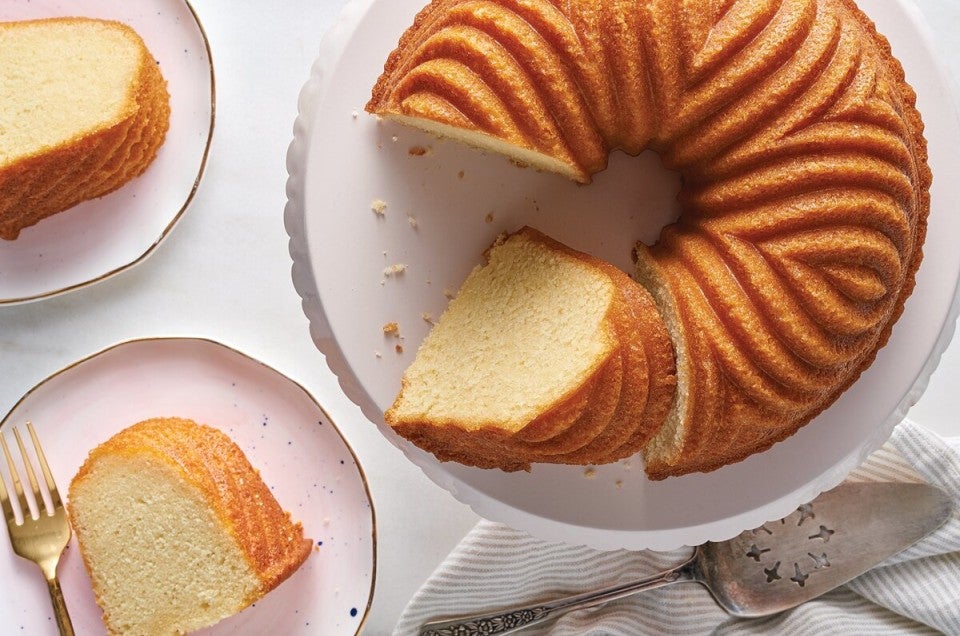


You're having a party. You need an elegant (but still easy) dessert, something beyond a simple sheet cake. What to make... Light dawns on Marblehead! Bundt cake is a simple yet striking way to turn a standard cake into something special.
So you bake your Bundt, turn the pan over, hold your breath... then let the expletives fly as the cake tumbles out of the pan in chunks, a ruined mess.
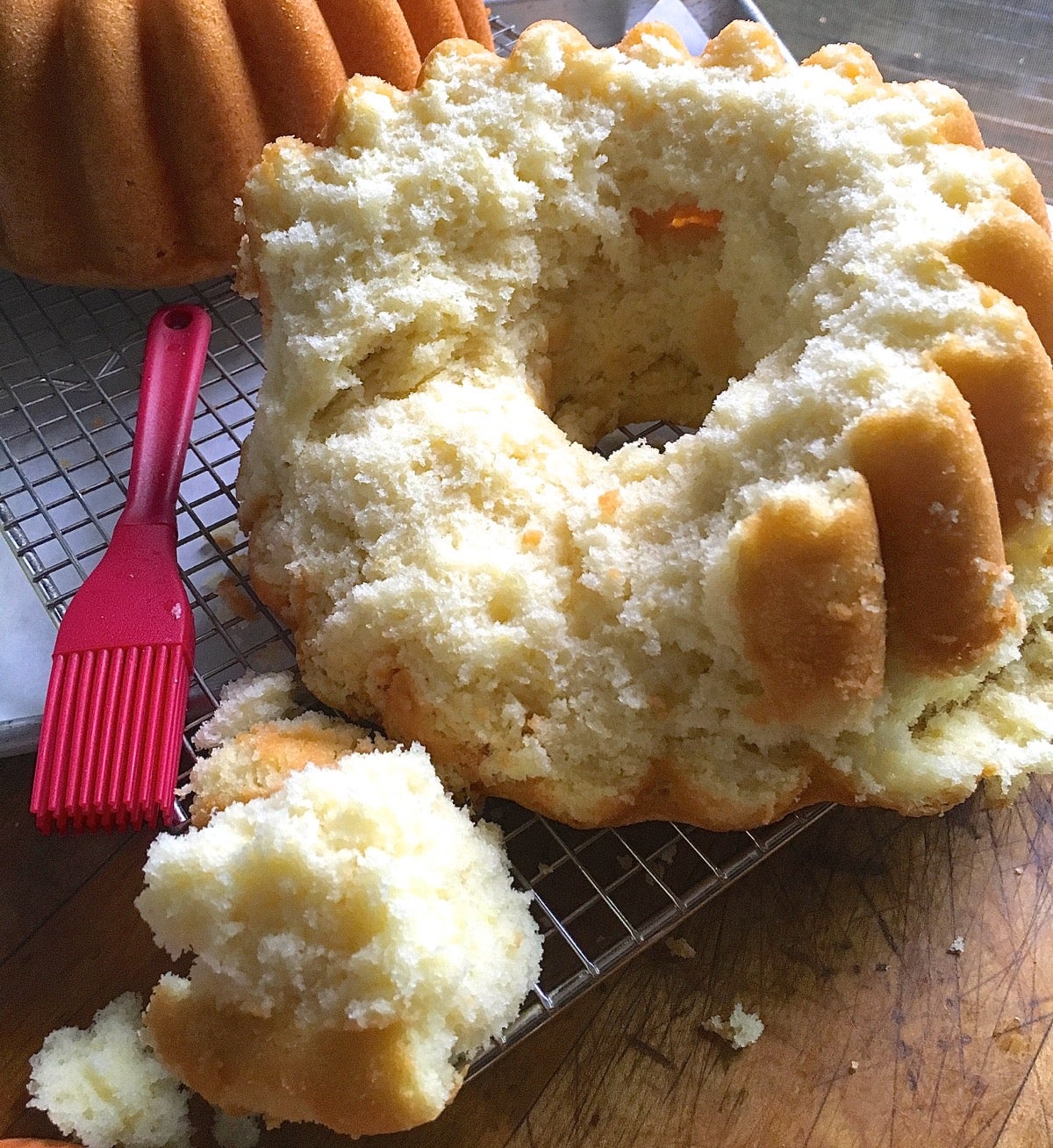
Want to know how to prevent Bundt cakes from sticking in the pan? Read this!
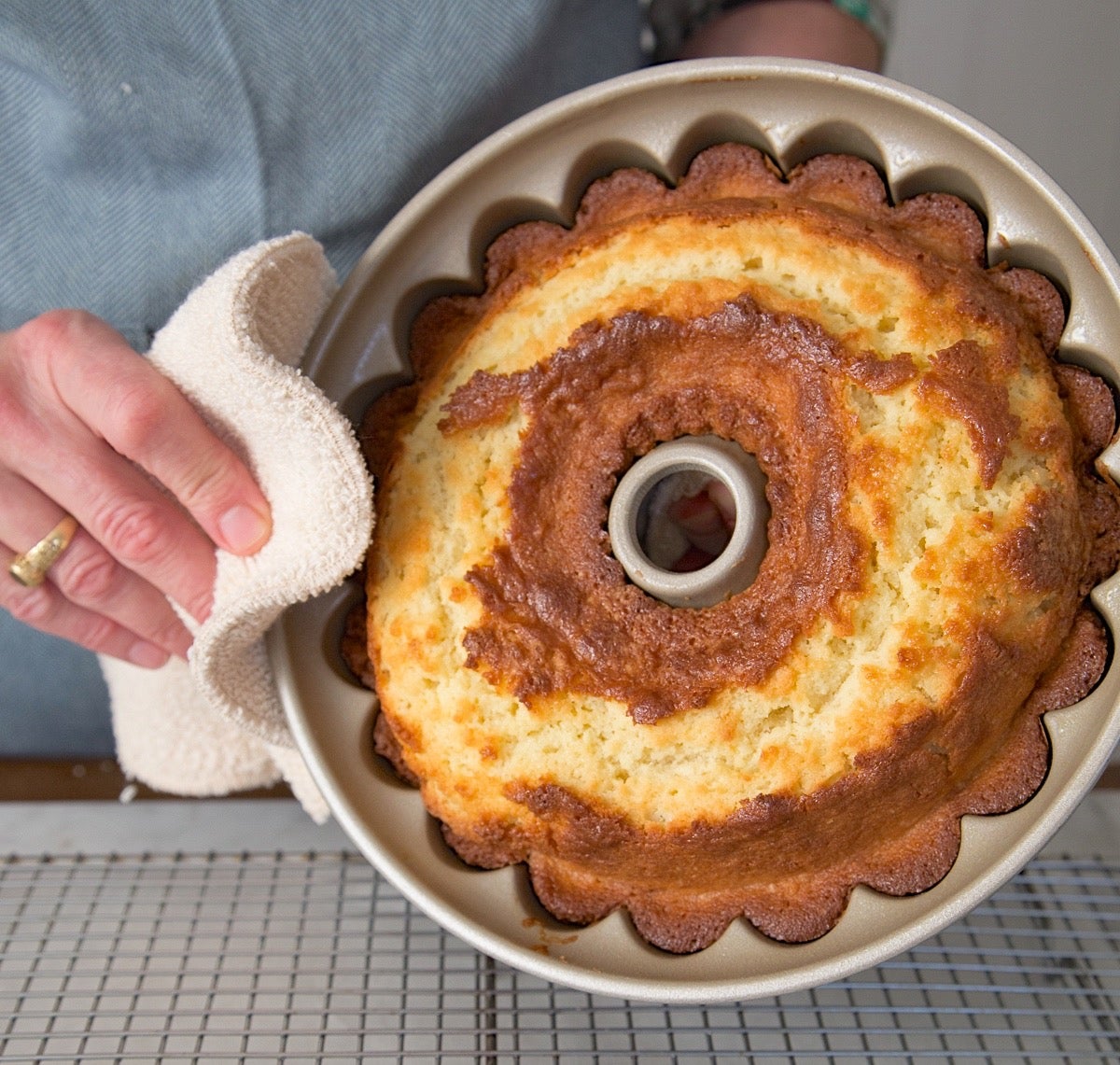
If you use your grandma's beat-up old aluminum pan (or a brand new top-of-the-line model), and your Bundt cakes ALWAYS come out of the pan with nary a crumb out of place — thank your lucky stars! Read the rest of this post if you feel like having a self-satisfied chuckle, but don't change a thing in your Bundt-baking routine.

Non-stick pans are the perfect solution to the inherent challenges in a Bundt cake's intricate design. But beware the older non-stick pan: a scratched, worn non-stick surface may no longer be slick enough to release your cake flawlessly.
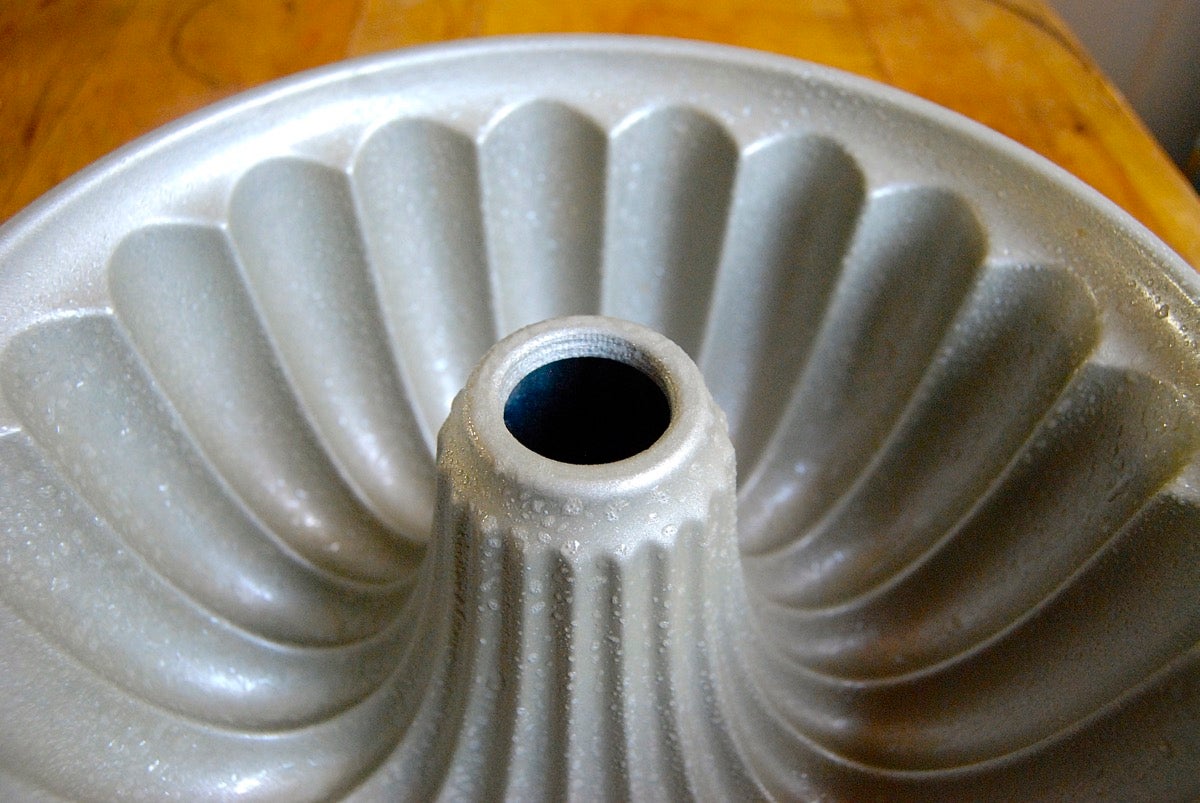
Use non-stick vegetable oil spray or melted shortening — not butter. The milk solids in butter can act like glue, encouraging cake batter to stick to the pan. (You always butter your pan, and your cake never sticks? See tip #1, above).
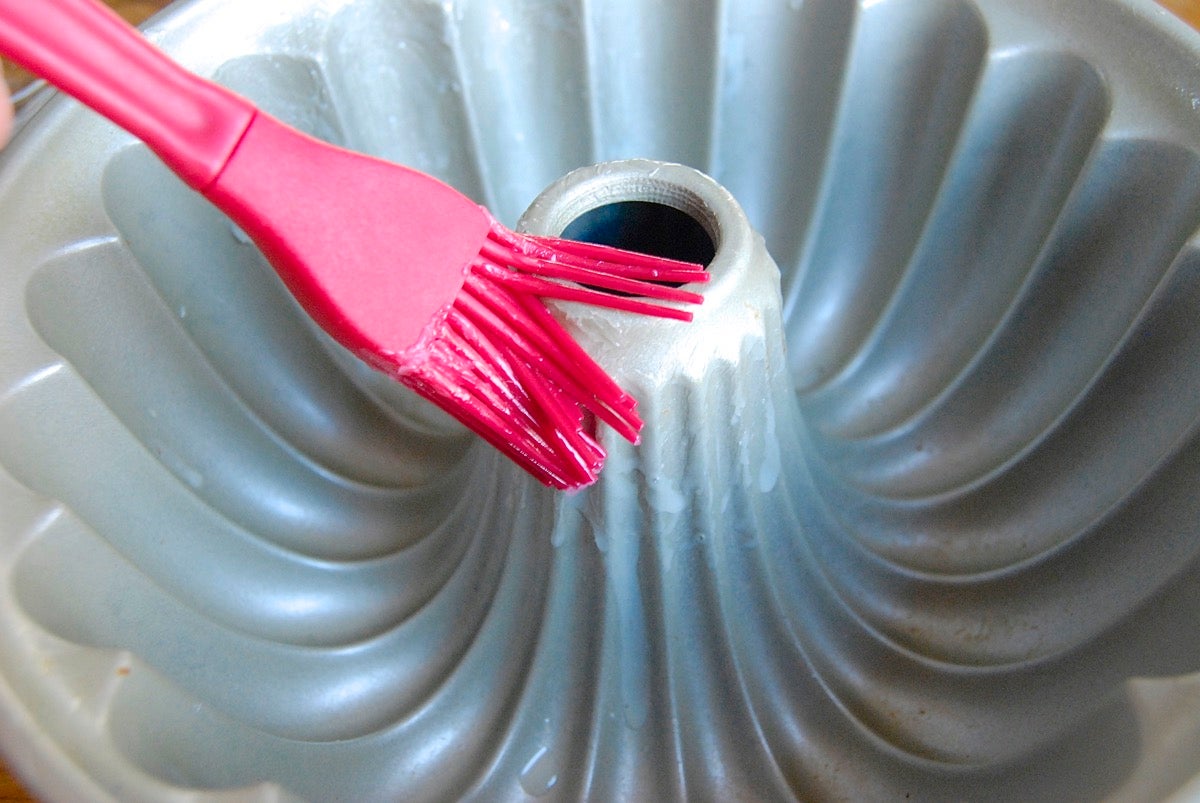
If your pan is particularly intricate, use a pastry brush to apply melted shortening to all its nooks and crannies.
Oh, and don't forget the center tube: it needs just as much careful attention as the rest of the pan.
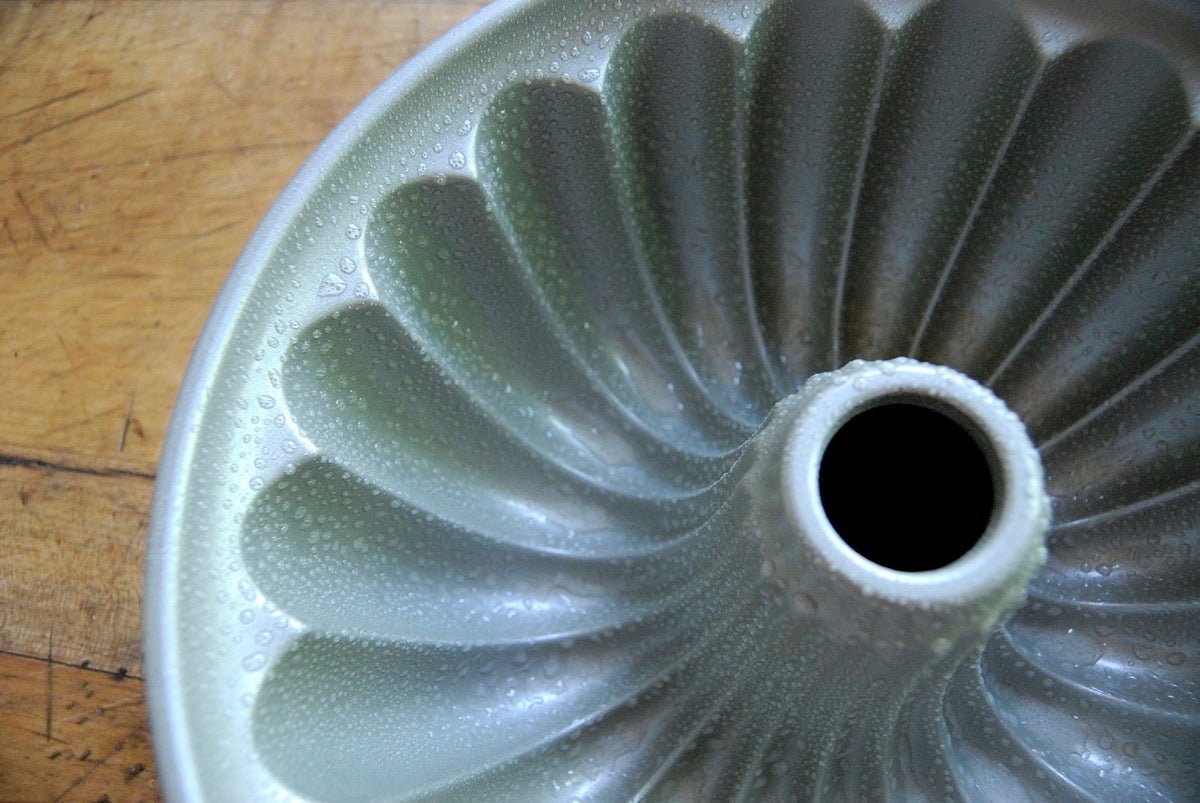
Most recipes start out, "Preheat your oven. Grease your pan..." We've found that greasing a non-stick Bundt pan too far ahead of time allows the oil to slide down the inside of the pan and pool in the bottom.

If you're using a non-stick pan and still having trouble with sticking Bundts, try sprinkling a coating of either finely ground nut flour (that's toasted almond flour on the left) or granulated sugar into the greased pan before adding the batter. Either will provide a barrier between batter and pan — which is what you're seeking.
"But isn't sugar sticky?" Yes, it becomes sticky as it cools; and it can act like glue when fully cooled. But while warm, sugar is still semi-liquid, and your sugar-coated cake should slide right out of the pan.
What about flour?
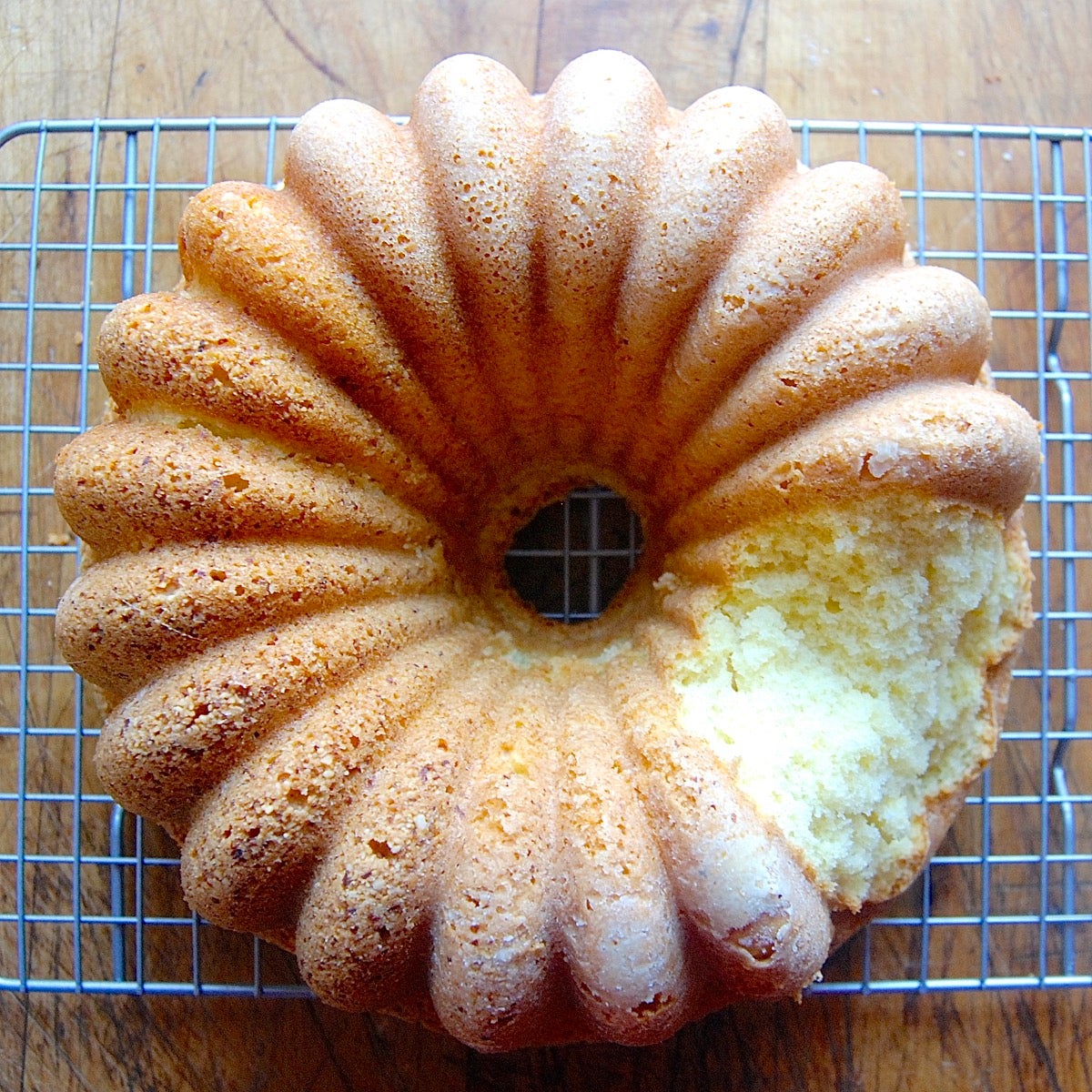
Here's an experiment I did sprinkling the inside of a greased Bundt pan with toasted almond flour (left side of cake); granulated sugar (top), and flour (the missing chunk, and some adjoining real estate at the bottom).
Not only does flour sometimes provide a less-than-satisfactory non-stick experience, it also adds a dry layer of "gunk" to the cake's surface. I prefer either sugar or finely ground nuts (nut flour).
"I always flour my Bundt pan and my cake always comes out just fine," you say? See tip #1, above.

A bit of gentle poking with a table knife or thin heatproof spatula is all you need to do. Carefully slide the knife or spatula down the sides of the pan as far as you can, to release any sticking spots.
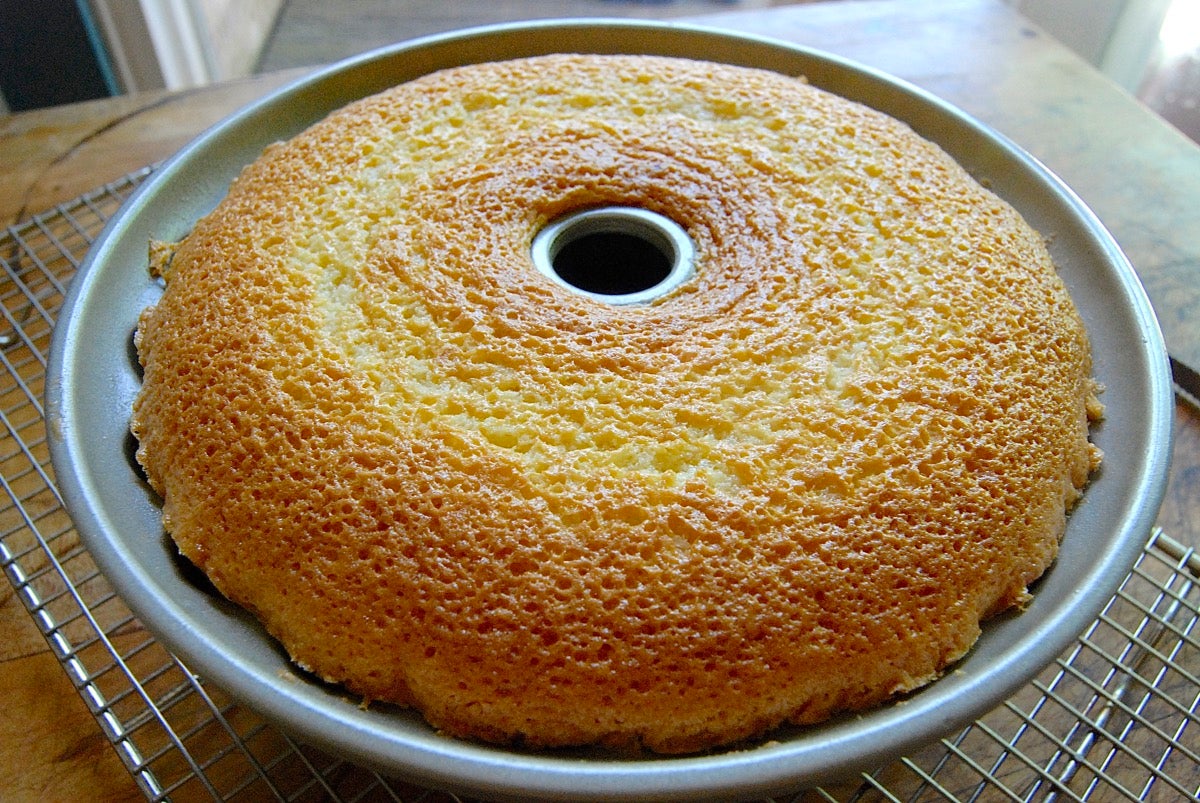
Sometimes your cake may rise up and over the tube, which will effectively block it from releasing from the pan. Either cut away any extra cake that's encroached on the tube; or gently push it back with your fingers. You want the entire top surface of the tube to show.

If your cake breaks when you turn it out of the pan, you could be misinterpreting the cause. Some cakes are extremely fragile right out of the oven; even if they don't stick to the pan, the simple act of moving them from pan to rack causes a fracture.
I like to let my Bundt cakes rest for about 5 minutes right side up; then for another 5 minutes upside down on a rack. Sometimes the cake drops out of the pan as soon as I turn the pan onto the rack. Sometimes it needs a little help — read on.

If you've turned the pan over, waited, and the cake hasn't dropped out of the pan onto the rack, give it a few gentle side-to-side jiggles. This small motion is often enough to release it.
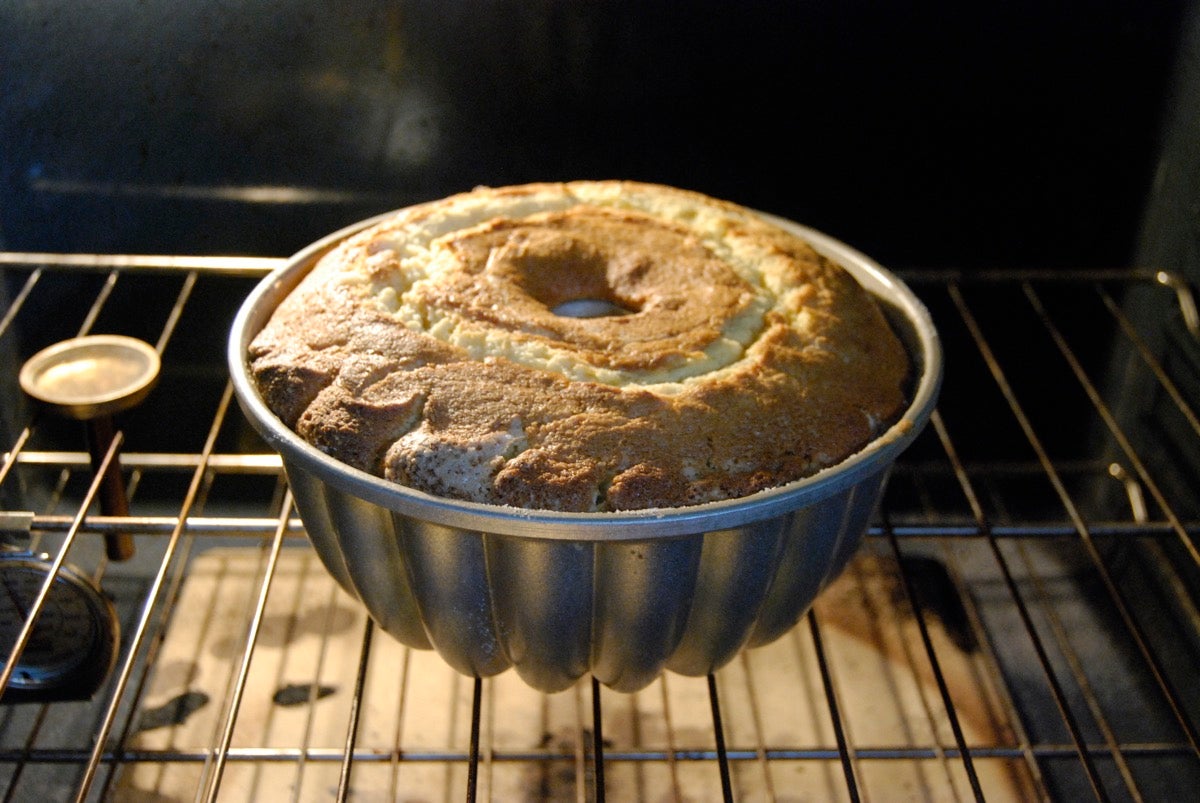
Return your cake to the cooling (but still warm) oven for about 10 minutes. Often this mild heat is just enough to soften and release any baked-on areas clinging to the sides of the pan.
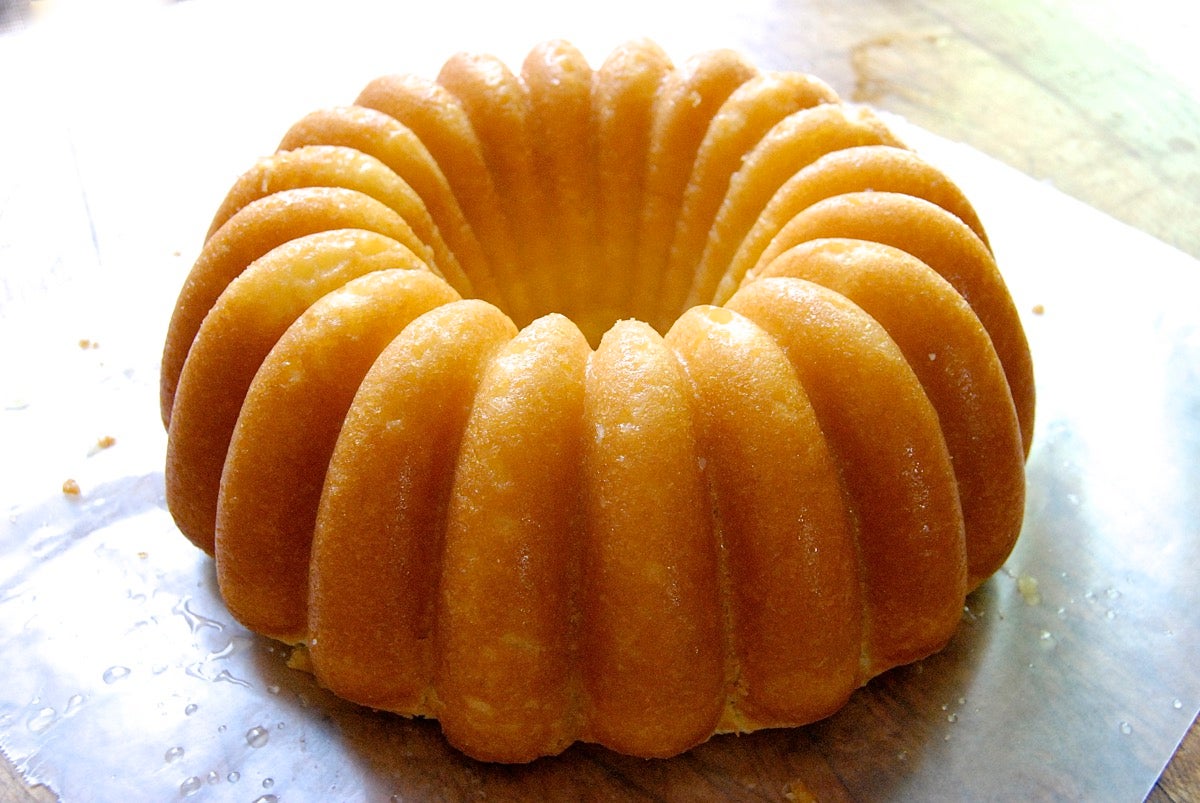
The cake starring in this blog post is one of our all-time favorites: Lemon Bliss Cake. We highly recommend it jumping-off point for using the tips in this post!
And, if you have any Bundt cake tips of your own, please share them in comments, below. We look forward to hearing (and learning!) from you.

